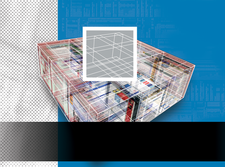A look at note-taking applications
Jot It Down

Although there are quite a few note-taking applications to choose from, we'll show you why NoteCase and NoteFinder should be at the top of your list.
Note-taking applications often are considered to be just glorified text editors. True – you can use a text editor to jot notes, but you need something more powerful if you want to format, organize, search, and export the stuff you write. Although you have quite a few applications to choose from, NoteCase and NoteFinder should be at the top of your list if you are in the market for a solid note-taking tool.
NoteCase
When you first visit NoteCase's website [1], you'll notice an impressive array of supported platforms. NoteCase runs not only on Linux, Free BSD, Mac OS X, and Windows, but also on Sharp Zaurus PDA and Maemo-based devices like Nokia N800 and N810 Internet tablets. Of course, NoteCase is available in the software repositories of almost every popular Linux distribution, but if you prefer to install the newest version of NoteCase, you might want to get the latest binary package from the application's download page, where you can find packages for Ubuntu, Fedora, and PCLinuxOS. Even a .deb package has been created specifically for Asus Eee PC.
NoteCase's interface is simplicity itself, with a tree pane on the left, an editing area on the right, and an obligatory toolbar at the top. But don't let its appearance fool you – the application packs a lot of features essential for efficient note taking.
[...]
Buy this article as PDF
(incl. VAT)
Buy Linux Magazine
Subscribe to our Linux Newsletters
Find Linux and Open Source Jobs
Subscribe to our ADMIN Newsletters
Support Our Work
Linux Magazine content is made possible with support from readers like you. Please consider contributing when you’ve found an article to be beneficial.

News
-
Two New Distros Adopt Enlightenment
MX Moksha and AV Linux 25 join ranks with Bodhi Linux and embrace the Enlightenment desktop.
-
Solus Linux 4.8 Removes Python 2
Solus Linux 4.8 has been released with the latest Linux kernel, updated desktops, and a key removal.
-
Zorin OS 18 Hits over a Million Downloads
If you doubt Linux isn't gaining popularity, you only have to look at Zorin OS's download numbers.
-
TUXEDO Computers Scraps Snapdragon X1E-Based Laptop
Due to issues with a Snapdragon CPU, TUXEDO Computers has cancelled its plans to release a laptop based on this elite hardware.
-
Debian Unleashes Debian Libre Live
Debian Libre Live keeps your machine free of proprietary software.
-
Valve Announces Pending Release of Steam Machine
Shout it to the heavens: Steam Machine, powered by Linux, is set to arrive in 2026.
-
Happy Birthday, ADMIN Magazine!
ADMIN is celebrating its 15th anniversary with issue #90.
-
Another Linux Malware Discovered
Russian hackers use Hyper-V to hide malware within Linux virtual machines.
-
TUXEDO Computers Announces a New InfinityBook
TUXEDO Computers is at it again with a new InfinityBook that will meet your professional and gaming needs.
-
SUSE Dives into the Agentic AI Pool
SUSE becomes the first open source company to adopt agentic AI with SUSE Enterprise Linux 16.

